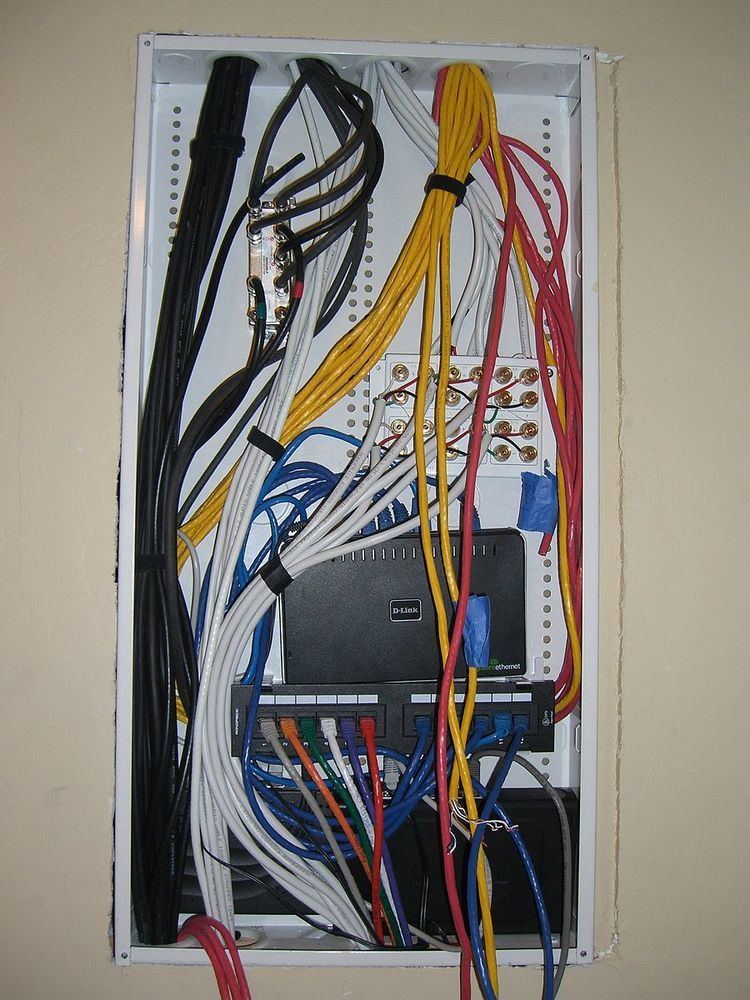 | ||
SCS is an acronym for "Sistema Cablaggio Semplificato" ("Simplified Cable Solution"). It uses a fieldbus network protocol and has applications in the field of home automation and building automation. It is used mainly in bTicino and Legrand installations.
Contents
General features
An SCS bus is based on a sheathed twisted pair formed of two flexible conductors; these are braided and unshielded with isolation 300/500V, SELV as double isolation is required – according to the rules adopted by CEI (International Electrotechnical Committee). The bus is unpolarized, devices are required to support the DC power supply in both polarity.
Wiring
Two kind of wiring are possible:
Communication
Across the SCS bus four different types of signals are transmitted in frequency modulation:
The transmission protocol is the CSMA/CA.
Functions
Through the SCS bus you have the following functions:
All the listed functions share the same technology and the same procedures for configuration / installation.
Configuration
All devices connected to SCS bus must be manually configured, no autolearn is possible, apart Alarm system and extenders. Configuration assign an address and an operating mode. Two kind of configurations are possible:
Addressing details
Device addressing use three different 'digits' A|PL|GR. The A mean the room, the PL is the Point of Load in the room, and GR is the group. Group join loads in same or different rooms in a logical manner. Not all devices has group addressing. All devices must answer to room broadcast called AMB. All devices must answer to general broadcast called GEN. Physical and Virtual addressing has different limitations:
In big houses and buildings, SCS address extension is possible, were different address domains are connected via some bridges. Only some kind of messages can cross a bridge. Here the values of physical configuration jumpers:
Certifications
Devices connected to the SCS bus are IMQ-certified and comply with these product standards (International Electrotechnical Commission (IEC) EN 50428 - IEC EN 60669-1/A1 - IEC EN 60669-2-1 - IEC EN 50090-2-2 - IEC EN 50090-2-3 ).
Integration
You can interact with the SCS bus through a gateway and an open high-level protocol called OpenWebNet. Two kind of gateway exist:
These gateways are bidirectional; they translate SCS frames into OpenWebNet frames, and the other way round. The open protocol OpenWebNet shared by MyOpen community, let everybody to build software that iteract with SCS devices. SCS protocol is a proprietary bTicino protocol. Interaction with other field bus must happen only writing software that use OpenWebNet.
